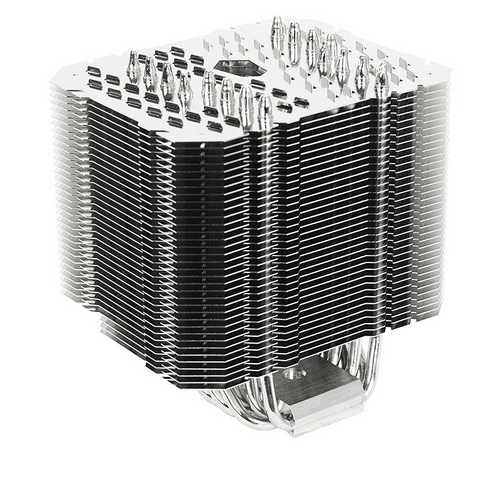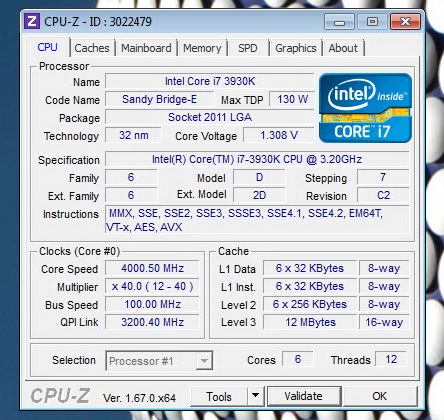INTRODUCTION

If i had to pick a single thing that it's quite obvious that all consumers including myself would like to have that is a completely silent system however especially for overclockers and perhaps even serious gamers that’s not really possible. Of course technology keeps evolving and with it so does everything else so to be completely fair we have come a long way since even just a decade ago but we've still to reach a point where we can have powerful whisper-quiet systems (at least not without spending a respectable amount of cash in the process). Tower CPU Coolers have been around for many years now but with just a few exceptions most of them use one or more high RPM fans to increase their cooling efficiency. Thermalright is not one of the leading CPU Cooler manufacturers over a decade now for no reason at all so they know very well what steps they need to take and in what areas they need to focus in order to release a high performance solution and the latest HR22 is the result of all their combined experience.
Thermalright is an elite design house that manufactures cooling products for computer components for the best quality and performance your money can buy. In 2002, AMD released its first generation Thunderbird CPU and since then we have been there every step of the way to counter high voltage and high heat with innovative design and highly acclaimed cooling solutions not only for AMD but for Intel as well. One of early well known solutions was the SK-6. With many positive and rave reviews under its belt Thermalright bolted to the top as the heat sink manufacturer mostly preferred by Overclockers and enthusiasts around the World. To this day, innovation never left our vocabulary as we keep coming up with leading edge designs staying ahead of the competition.
To get the best possible results in terms of cooling efficiency a CPU Air Cooler needs to have a number of things going for it including a large number of aluminum or copper fins (copper however is quite expensive so most manufacturers choose that material to create special edition limited models), as many copper heatpipes needed to make use of that specific number of fins and a good high-RPM fan or set of fans to provide plenty of air moving through the fins. So if a company was to skip on the fans entirely to release a passive noiseless CPU Cooler naturally they would need to make up for that with something else and the easiest solution is to provide a larger surface area which means either more or simply larger fins. That's pretty much the path Thermalright chose to take with the HR22 and the result is really massive making it perhaps the largest single heatsink tower model in the market currently. We have seen a few similar attempts in the past but none really managed to impress us in passive mode so let's see if the HR22 is good enough to be the exception.
SPECIFICATIONS AND FEATURES


PACKAGING AND CONTENTS
The trademark box Thermalright has been using like forever is here once again so nothing other than just their logo is placed at the top.
On both sides we see the product name (sometimes they refer to it as HR22 and on others HR-22, we used both in this review).
The heatsink is placed inside two pieces of foam while the rest of the bundle sits inside another cardboard box.
As you can see Thermalright has once again provided one of the richest bundles available for a CPU Cooler so aside the massive HR-22 you will also receive their proprietary airflow tunnel, full size screwdriver, installation manual, thermal paste tube, set of fan wire mounts, 4 rubber fan pads, Allen key, two backplates and all the necessary screws and mounting hardware for Intel LGA1150/1155/1156/1366/2011 and AMD AM2/AM2+/AM3/AM3+/FM1/FM2 mainboards.
THE HR-22
We did say that the HR-22 is massive right? Well with 159mm in height, 150mm in length, 120mm in width and a weight of 1120g it surely is.
The body of the HR-22 features a grand total of 35 aluminum fins each 0.5mm thick.
Aside the large hole at the top which is used to secure the cooler with the mainboard the other holes are in place to enhance airflow.
To better understand how these holes improve airflow you will need to take a look from either side (these holes basically keep the air trapped between the fins). From the side you can also see that thanks to the design of the heatsink it will not interfere with memory modules and mainboard components.
This is perhaps the only time that we've seen eight 6mm all-copper nickel plated heatpipes passing through the base of a CPU Cooler and through all of its fins.
As expected from Thermalright the copper base features a nice mirror like finish.
Although the HR-22 has the 120mm version of the airflow tunnel bundled with it (you connect the back of the cooler to your rear exhaust case fan) Thermalright also send us the 140mm version which we ended up using (although i don't think both are sold together).
TEST BED


TESTING METHODOLOGY
We always take things quite seriously when it comes to work so just like with the previous LGA1366 database we will not be testing each CPU Cooler on its own and with different ambient temperature levels and thus we can actually have yet another valid CPU Cooler database. Testing a CPU Cooler automatically means that you need to know where it stands against the immediate competition and to accomplish that we have spent both money and time through the years, something that we plan to continue to do so in order to get the most accurate results for the end consumers who read these lines. Every CPU cooler in this database is tested with the bundled 140mm/120mm/92mm/80mm fans while working at both idle speed and 100% of their speeds for all the temperature tests. CPU Coolers that do not come bundled with a fan/s are measured using a Noctua fan (size dependent on the model) to test for the temperature tests but due to the lack of a stock fan dBA level tests are obviously skipped. Single (120/140mm) watercooling solutions are tested with the radiator mounted at the rear of our test rig while dual/triple/quad (240/260/280/360/420/480/560mm) solutions with the radiator mounted at the top. For the dBA tests every cooler in the database was measured both while on idle mode or with the fan controller in the minimum setting and while on extreme load or with the fan controller all the way to the highest possible setting (PWM fans do that on their own without our intervention). Every single test takes place in a temperature controlled room of 23 degrees Celsius Ambient Temp with the help of two AC units placed diagonally inside the room. The Arctic Silver 5 thermal paste is used with every CPU Cooler in our latest LGA2011 database (although initially this was not the plan we had to change things to get the most accurate results). Finally it's very important to point out that just because a CPU Cooler is better than another when tested with our test rig that does not necessarily mean that the same performance differences will apply 100% for other CPU models and in other situations (such as different ambient temps and system configurations).
To successfully record the load temperatures we use the latest OCCT application for around 6-10 minutes to push the processor to its limits and after that is done and the temperatures are recorded we wait for about 10-20 minutes for the CPU to cool down and record the idle temperatures. This is done to allow time for the thermal conductive material to achieve the optimal performance level. Same procedure is then repeated with the Passmark BurnIn Test as a failsafe just in case the OCCT results are wrong. This procedure takes a lot more time than the usual peltier/thermometer tests but this way not only can we deliver real world results to our readers based on real CPUs but we can also triple check the results using a variety of programs. Last but not least the temperatures were recorded using both the latest versions of AIDA64 and RealTemp while the noise level tests are performed using a high precision ExTech HD600 Decibel Meter placed about 10-15cm above the CPU Cooler. Still although the same testing procedure applies to all units do take into consideration that unlike the official numbers which are measured in special noise isolated labs with just the fans here we also have both the rest of the cooler and the rest of the system (although all system fans are turned off when recording noise levels).
TEST RESULTS

CONCLUSION

Although you can clearly see from our charts that the cooling efficiency of the HR-22 actually is as advertised things are not as black and white as they may seem. True the HR-22 is a passive CPU Cooler without any fans whatsoever so its noise levels are 0 but in order to achieve its optimum cooling efficiency it requires good airflow levels and the only way to get that is to have at least two system/case fans installed. Now the reason i'm saying just two is because you need at least one at the front of the case shucking air from outside and pushing it towards the HR-22 and one at the rear which you need to connect with the bundled airflow tunnel. With all the fans inside our case turned off the performance of the HR-22 was reduced quite a bit (in a fast test we recorder almost 67 degrees celcius under heavy load) and so although you can still use it like that and have a completely silent PC (providing of course that your graphics card is also passively cooled) we wouldn't recommend it for people who like to overclock their CPUs. Regardless of all that the HR-22 is indeed a passive CPU Cooler which makes use of your system fans to come really close in terms of performance to some of the top CPU Air Coolers in the market today and we see nothing wrong with that.
All the top CPU Cooler models cost quite a bit and although the HR-22 is a Fanless solution still its large size propels its cost something which is clear from its current retail price tag set at USD89.90 inside the USA (Amazon.com) and 72.99Euros inside the EU (PC-Cooling.de). So if you happen to cherish silence and you would like to have a silent PC then the HR-22 is the obvious solution as long as you're not very much into overclocking. For serious gamers, enthusiasts and overclockers the HR-22 may not be the ideal choice right from the factory but by adding one or two fans you can always boost its performance even more and to levels comparable with the best CPU Air Coolers in the market as we speak. However our job is to "judge" the HR-22 based on its advertised passive cooling efficiency and since we feel it did remarkably well we are awarding it with our Platinum Award.

PROS
- Excellent Build Quality
- Passive Solution (0dBA)
- Cooling Efficiency
- Design (No Clearance Issues)
- Bundle Contents
CONS
- Price (For Some)

 O-Sense
O-Sense




















.png)

